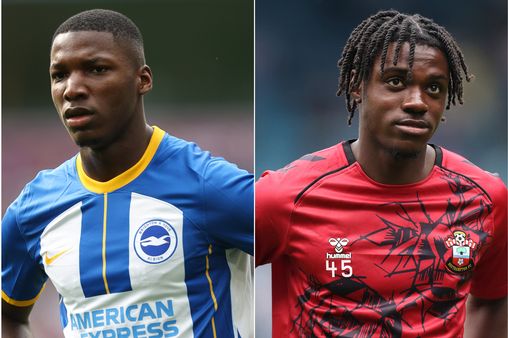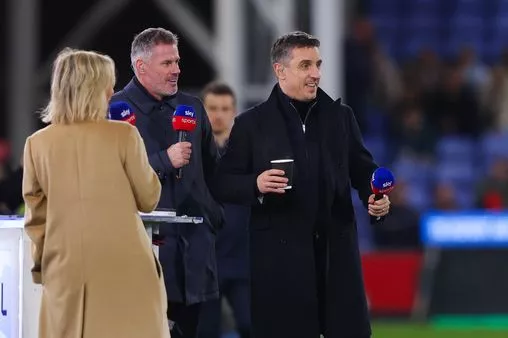Having been forced to lick their wounds after two failed pursuits of a defensive midfielder that they so desperately crave, Liverpool will return the market in the coming days and weeks, before the transfer window closes at the end of the month.
Having lost out to free-spending Chelsea on both Moises Caicedo of Brighton & Hove Albion and Romeo Lavia of Southampton, with the duo both heading for Stamford Bridge for a combined fee of around £170m, Liverpool must reassess their options when it comes to finding someone to fill the void left by the departures of Jordan Henderson and Fabinho to the Saudi Arabian Pro League.
For so long under the ownership of Fenway Sports Group, Liverpool have attempted to find value in the transfer market that others missed. Signings such as Mohamed Salah, Sadio Mane, Andrew Robertson and Georginio Wijnaldum were all sealed for far below what their market rate would end up being.
It was a transfer tactic, underpinned by a strong use of data analytics, that would make their recruitment the envy of Europe and have many clubs seeking to mirror the success.
But finding those hidden gems and marginal gains has become increasingly difficult and now it is the likes of Brighton who are looked at as the model for unearthing talent.
Caicedo, at 21, is a huge talent. He has a skill set perfectly suited to the Premier League and has a season to back up much of the hype. But carrying a transfer fee of £115m shows how distorted the transfer market has become, with the Ecuadorian acquired for just £4.5m two years previous having seen a 2,455% increase in his value.
Chelsea set the tone for a new era of spending back in the early 2000s under Roman Abramovich, and fast forward some 20 years the London side, now under the ownership of Todd Boehly and Clearlake Capital, are setting down new markers again through longer contracts to reduce the annual amortisation charges on the books (how transfers are accounted for through dividing the guaranteed fee by the number of years on the player’s contract).
Liverpool didn’t want to pay £50m to Southampton for Lavia, seeing three failed bids, with Chelsea’s renewed interest in Caicedo following the Reds’ £111m bid, which would have been a British transfer record, forcing the London side into paying £35m more than they had initially bid. Liverpool then went to £60m for Lavia, £15m more than their own bid before the player eventually chose Chelsea.
There is a memorable scene in the final series of HBO series Succession where the patriarch of the multi-billionaire Roy family, Logan Roy (played by the great Brian Cox), in a telephone call with his estranged children who are battling against him to buy a rival media company tells them: “congratulations on saying the biggest number, you f*****g morons.”
While Chelsea’s acquisitions of Caicedo and Lavia could hardly be called moronic given the quality being signed, the price tag paid for their services isn’t really rooted in anything other than who is willing to say the biggest number, and Brighton and Southampton have shown themselves to be no pushovers when it comes to the negotiating table.
There is a long-held narrative that surrounds FSG that they are not willing spenders in the transfer market. Indeed, it’s true that they haven’t spent as much as their rivals when it comes to net spend, the way in which whether owners are ambitious or completely void of ambition tends to be judged in some corners of social media.
For a long time the way of conducting transfer business has been successful for the Reds, although the lack of spend in the immediate aftermath of the Premier League title win and missed opportunities to strengthen in recent windows has led to them being faced with an expensive rebuild.
But where FSG have for so long been seen as the smartest guys in the room the transfer market has continued to evolve and the envelope pushed even further. Clubs who find themselves the subject of interest from major sides for their young assets now no longer allow themselves to be bullied. They know the value of the market and that it is one where there is a willingness to spend.
There is the idea that Liverpool and their rivals could just snap these gems that the likes of Brighton find up at source. But they can’t offer first team football in a lower pressured environment that allows players to thrive, they need finished articles that can compete at the highest level week in, week out. There is huge revenue attached to the biggest seven clubs in the Premier League succeeding at home and abroad.
While the £111m bid for Caicedo may have demonstrated a willingness to compete in the market by FSG, it has also seen Liverpool, whether intentional or not, further raise the bar when it comes to the transfer market, both in the short and longer term.
In the short term, selling clubs know that Liverpool have the financial wherewithal to pay big money given that the £111m hasn’t just disappeared into thin air.
They have also shown, with two failed attempts to land targets, that they have time against them and fewer options to manoeuvre that they did previously. All that works in favour of the selling club who will want to drive the highest possible price before the end of the window.
In the longer term, it was only 2021 when people were stunned that £100m had been spent on Jack Grealish. We are now in the territory, after deals for Enzo Fernandez, Declan Rice and Moises Caicedo, all defensive minded midfielders that historically might not have attracted market busting sums in the same way attacking players do, where £100m plus is now the new norm.
It is a trend that will only likely increase in seasons to come as the biggest sides have greater revenue available to them through more money from the Premier League through its broadcast deal and a greater sum to come from the revamped Champions League from 2024.
All clubs will continue to seek value, but for players that can contribute immediately for major clubs there is a premium to be paid. Liverpool have exposed themselves more than they would have wanted to in this window and committed to taking part in the serious bidding that will continue to drive the transfer market.
They will sign a defensive midfielder and potentially other options in midfield and defence, and those additions will likely be good ones and Liverpool will remain an uber-competitive force at the top end domestically and in Europe. However, they are likely to see their leverage diminish and their negotiating hand weakened. Finding value has never been so hard.



